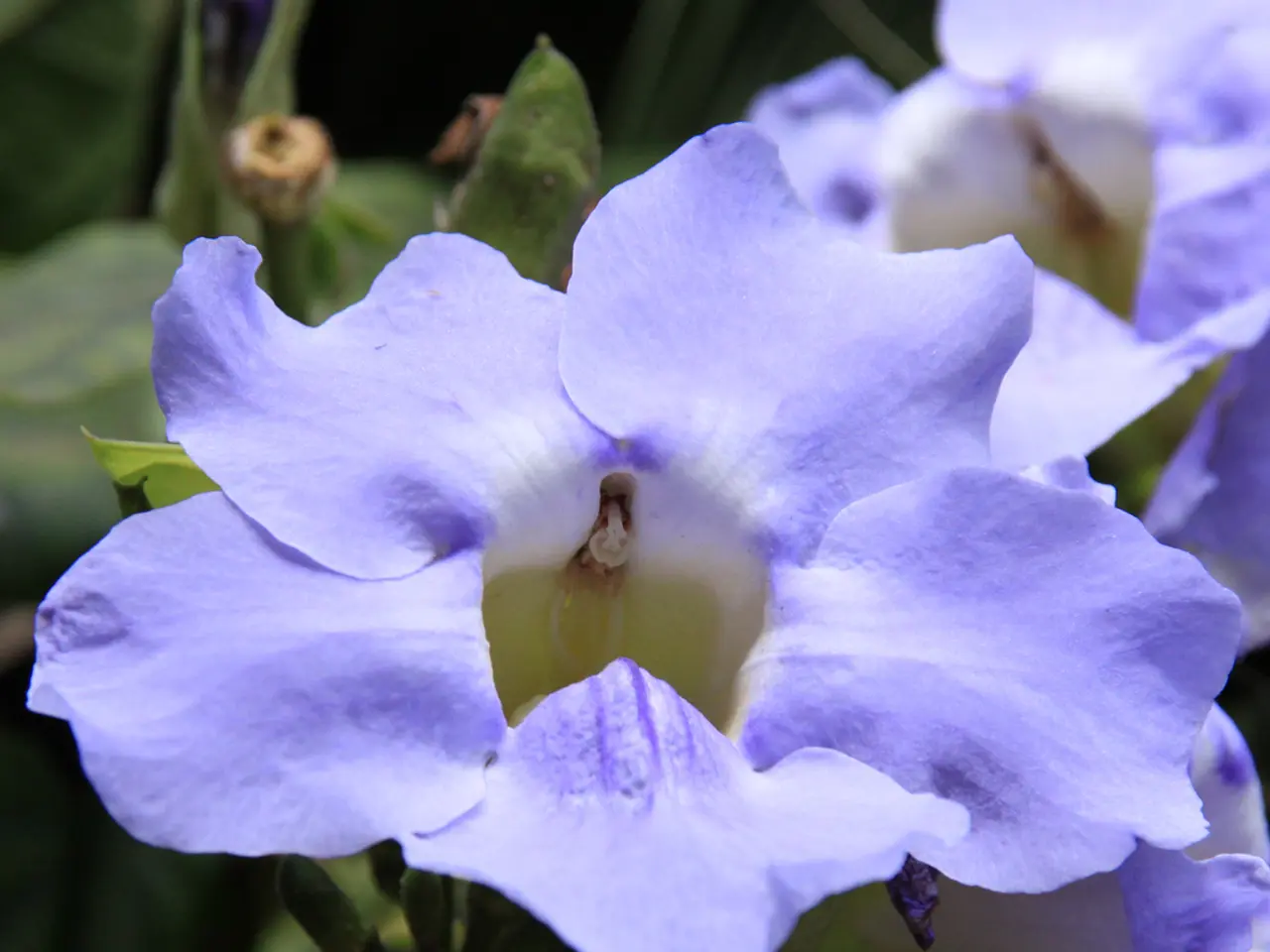Maintain Vibrant Dianthus Blooms for Extended Periods: Deadheading Techniques to Encourage Continuous Flowering
In the world of gardening, dianthus plants are cherished for their versatility and captivating blooms. These hardy perennials can thrive in borders, rockeries, pots, and window boxes, offering a splash of colour from spring to fall with the right care.
To ensure a prolonged flowering period, it's essential to understand the characteristics of long-flowering dianthus and provide them with suitable growing conditions.
## Characteristics of Long-Flowering Dianthus
Look for varieties that bloom from spring to early summer and rebloom intermittently or continuously through summer and fall with proper care, such as deadheading. Some varieties, like 'Queen of Sheba' and 'Cocktail Mojito', are noted for their long flowering periods. 'Queen of Sheba' is described as floriferous and long-flowering, while 'Cocktail Mojito' is mentioned as a long bloom variety.
## Tips for Extending Bloom Period
Deadheading, or the removal of spent flowers, is a vital way to promote further blooming in dianthus plants. Regularly remove faded flowers to stimulate new blooms and extend the flowering period. Divide clumps after flowering to maintain plant health and encourage more blooms in the following years. Provide the plants with a suitable environment, such as full sun and good drainage, to support their growth and longevity.
## Popular Long-Flowering Varieties
'Queen of Sheba' and 'Cocktail Mojito' are popular choices for their extended bloom periods. 'Bath's Pink' or Cheddar Pink (D. gratianopolitanus) reblooms intermittently through summer with proper care. The Scent First series, including 'Candy Floss', 'Sugar Plum' and 'Passion', can flower from May to September, especially with deadheading. Dianthus 'Fizzy' can bloom from early spring to late summer.
By choosing the right varieties and providing optimal care, you can enjoy a prolonged flowering period from your dianthus plants.
When to deadhead dianthus plants depends on the region, but it usually occurs in summer when petals begin to die back or wilt. If dianthus plants are not deadheaded, their growth may slow.
Feeding dianthus plants with a sensible fertilizer during the growing and flowering season can boost bloom. Continued and correct watering throughout the hottest parts of summer helps to encourage production of flowers into the fall. Mature seed from dianthus plants may drop to the ground, resulting in the growth of volunteers.
Newer introductions or hybrid cultivars may also set seed, with resultant traits varying significantly from that of parent plants. It is not mentioned whether dianthus plants come back every year or if they prefer pots or the ground in this article.
Dianthus plants need at least six hours of sunshine a day for optimal growth and blooming. With the right care and attention, dianthus plants can provide a stunning display of colour in your garden for many months.
To maximize the flowering period of long-flowering dianthus, choose varieties like 'Queen of Sheba' and 'Cocktail Mojito', known for their extended bloom periods, and follow practices like deadheading, proper fertilization, and watering. Regular removal of spent flowers, fertilizing in the growing and flowering season, and maintaining good watering during summer encourage new blooms, extend the blooming period, and support the plant's overall growth.





